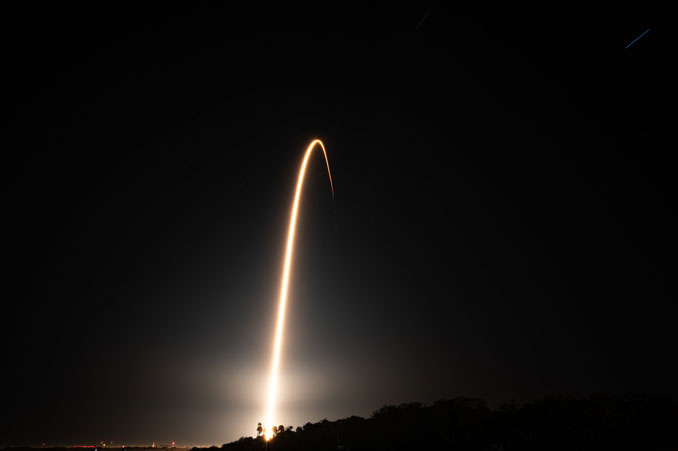
SpaceX launched a Falcon 9 rocket from Cape Canaveral in the early hours Saturday as the company continues to expand its network of more than 9,000 satellites for the Starlink internet service.
Liftoff from Space Launch Complex 40 at Cape Canaveral Space Force Station came at 2:53 a.m. EST (0753 UTC). It was the 150th flight of a Falcon 9 rocket in 2025 and the ninth of 11 Starlink missions planned this month and the 109th Starlink delivery run for the Falcon 9 this year.
After climbing away from pad 40, the Falcon 9 pitched and rolled on to a south-easterly trajectory to place its cargo of 29 Starlink V2 satellites into an orbit inclined at 43 degrees to the Equator.
SpaceX flew B1090, a relatively new first stage booster making its ninth flight. After separating from the Falcon 9 second stage at an altitude of about 40 miles (65km), it continued to arc higher over the Atlantic crossing the Karman line — considered to be the boundary of space — before plunging back to Earth and landing on the drone ship ‘A Shortfall of Gravitas’.

The second stage fired for about six minutes to place the Starlink satellites stacked atop the rocket into a parking orbit. After coasting for about 45 minutes, the second stage circularized the orbit with a one-second burn of its Merlin Vacuum engine.
Separation of the satellites into a 170×162 mile (274×261 km) orbit came an hour and five minutes into flight.
Another 28 satellites are scheduled to launch from the West Coast Sunday morning.

